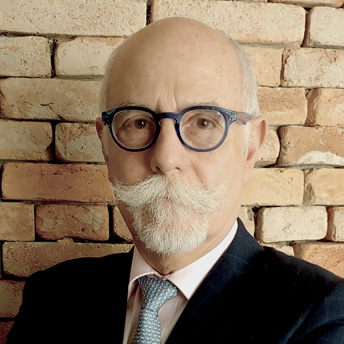LEGAL TECH ERA
January 16 2020
Innovation in and beyond legal services: faster and cheaper, or better and different?
Jose Paulo Graciotti


Abstract
The innovation process can happen as the spark of a wonderful idea that can suddenly create a disruptive model. But most of the time it's a process that requires encouragement, organization, discipline, focus and a lot of persistence. And it is exactly in these aspects that we Latin people are not so good.
* * *
I have just come back from ILTACON 2019, the International Conference of ILTA – International Legal Technology Association. And, to my surprise, many of the sessions devoted to innovation in legal services did not focus on technology, but rather on human behavior. Very interesting!
We have been bombarded lately with news of the spectacular advances that technology has made in every field (autonomous cars, robotic surgeries, Honda's “Asimo” robot, Boston Dynamics, etc.) and there is a natural tendency for all of to automatically link “innovation” and “technology”, but it's not just that and it's not that simple.
Obviously, you can't talk about innovation while ignoring technology, but again there are some exciting examples where innovation doesn't depend on it. Look at what the airline KLM did to solve the problem of passengers’ small objects forgotten on their flights when they arrive at Schiphol in Amsterdam. The solution was a Beagle dog and not a robot!
As Josh Linkner says in his books, “Innovation is a way of life” and not just an isolated project. You and your business need to live and breathe innovation 100% of the time!
Again, quoting Josh, innovations come up with what he calls “big little ideas”, i.e. the sum of small attitudes such as: mini or micro innovations, daily innovations. Everyone can innovate, just do not curb your enthusiasm, avoid pre-conceptions and be willing to try.
Bringing the discussion to legal services, we need to make some considerations
The first is to be very careful when we “import” the ideas and solutions adopted in countries that are more developed from a technical point of view, specifically the US, as their structural model of corporate law firms is very different from ours.
Some innovative attitudes are common, expressed as they are by phrases such as “think outside the box”, “do the unexpected”, “surprise the customer”; but the differences start to appear when we think of ways to promote and implement such attitudes.
For various reasons (office size, investment capacity, age, market maturity and size, competition, internal and external standardization, and finally Anglo-Saxon culture that is very different from our Latin one), the organization of American offices is at a much more structured stage than our ‘Tupiniquins’, and we need to be very aware of our reality.
There, the word innovation is very much tied to breaking boundaries and promoting the integration of teams and sectors in order to bring out new ideas. Here, we are much more flexible, adaptable and gregarious, but we come across disciplinary, organizational and ego-conflicts, and a relative financial "comfort zone" situation.
The main factor in office innovation is the willingness of managing partners to change. That is, to change their mindset, to confront the status quo. The rest will come naturally: changing the organization chart, decreasing the hierarchical degrees, creating multidisciplinary groups with the participation of new generations, promoting meetings to listen to customer suggestions and needs, making visits to customers with the objective of knowing your business, offering customers efficient technological facilities (for them), suggesting fee charging options without the customers having to request them. Ideas have no limits. Our accommodation is what surrounds them. Do it differently!
So far, we have covered more conceptual aspects of innovation, namely the behavior of partners, staff and company. Now, let us discuss the implementation of innovation.
As I said before, our difficulty (us Brazilians and Latinos) is not with inventiveness and flexibility, which we have to spare, but in having methods and procedures organized to implement any change and still have the discipline to follow them.
The adoption of an innovative model must be accompanied by a change in the management process, which includes some basic principles like: do not curb initiative; create a sense of need and urgency for innovation; involve everyone in the creative process; communicate, motivate and train; plan and follow up; this all takes support and encouragement (first and foremost from managing partners).
Just for the sake of reasoning organization in this discussion, let's split the focus analysis into internal and external. In my opinion, the internal focus should be on increasing efficiency, productivity and competitiveness and the other external focus on customer satisfaction and happiness, which are becoming more demanding and selective.
Internally, the technology factor has appeared as a strong component. Prediction systems, which allow you to more accurately predict the outcome more precisely thatn the Jurassic taxonomy “probable, possible or remote”; cognitive document analysis, which allows computers to identify the context of a written document; document drafting automation systems, which allow much faster execution of contracts, petitions, etc. provided they have a high degree of repeatability; text and voice transformation systems and vice versa, which allow to give commands in corporate search systems, for example.
The challenges are, on the one hand, choosing the right tool for your needs, as these products are not cheap and also require a lot of effort for their effective deployment and also a great time dedicated to training both software and staff. On the other hand, try to “stay ahead” by using these technologies before competitors and especially before clients, remembering that large consumers of legal services are also in this dispute through their internal legal departments.
Using H. Jackson Brown's phrase: Either you make dust or eat dust!
Externally, as already mentioned, trying to unceasingly seek solutions in providing services that surprise the customer and create an empathetic relationship with the brand and the contact (partner).
I would like to end with two striking phrases - that are not mine - to further stimulate all those weighing in on the topic and its challenges:
Innovation alone is arrogance!
Innovation in a vacuum is nothing. It needs a lot of conversation!
Always do keep in your mind that innovation is not simply doing better, faster and cheaper but doing different.
Article author:
Jose Paulo Graciotti| Brasil
Leave a comment:
Related Articles

